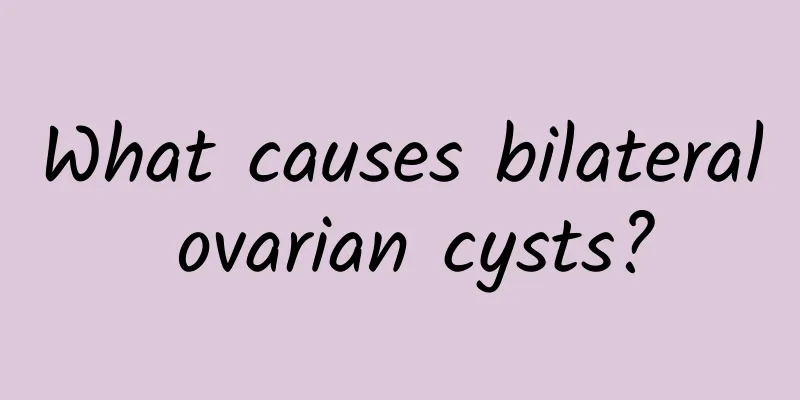Can you still get pregnant with endometriosis?

|
Patients with endometriosis can get pregnant, but they may face certain difficulties and need targeted treatment and conditioning. Endometriosis is the growth of endometrial tissue outside the uterus, such as in the ovaries and fallopian tubes, which may cause pelvic adhesions, fallopian tube obstruction and other problems, affecting conception. Treatment includes medication, surgery and assisted reproductive technology. At the same time, the chance of pregnancy can be increased by adjusting diet and lifestyle. 1. Drug treatment is the first choice for endometriosis. Commonly used drugs include oral contraceptives, gonadotropin-releasing hormone agonists and progesterone. Oral contraceptives can inhibit the growth of the endometrium and reduce ectopic lesions; gonadotropin-releasing hormone agonists can inhibit ovarian function, reduce estrogen levels, and relieve symptoms; progesterone directly acts on the endometrium to inhibit its proliferation. 2. Surgical treatment is suitable for patients who are ineffective with drug treatment or whose condition is severe. Common surgical methods include laparoscopic surgery, ovarian cystectomy and hysterectomy. Laparoscopic surgery can remove ectopic lesions and restore the normal anatomical structure of the pelvic cavity; ovarian cystectomy is suitable for patients with ovarian endometriosis cysts; hysterectomy is the last choice and is suitable for patients who have no fertility needs and severe symptoms. 3. Assisted reproductive technologies such as in vitro fertilization and embryo transfer are effective means to help patients with endometriosis become pregnant. In vitro fertilization combines eggs and sperm in vitro to form embryos, which are then transplanted into the uterus, which can bypass problems such as blocked fallopian tubes; embryo transfer is based on in vitro fertilization and then transplants the embryo into the uterus to increase the chance of pregnancy. 4. Dietary adjustment also has a positive effect on pregnancy in patients with endometriosis. It is recommended to increase the intake of foods rich in Omega-3 fatty acids, such as deep-sea fish, flax seeds, etc., which can help reduce inflammation; eat more fiber-rich foods, such as whole grains, vegetables and fruits, which can regulate hormone levels; reduce the intake of red meat and processed foods to avoid aggravating inflammatory responses. 5. Lifestyle adjustment is equally important. Maintaining regular exercise, such as yoga and swimming, can improve pelvic blood circulation and relieve symptoms; avoiding excessive fatigue and stress, maintaining a good attitude, and helping to regulate endocrine; quitting smoking and drinking can reduce the negative impact on the reproductive system. Patients with endometriosis can increase their chances of pregnancy through comprehensive treatment and conditioning. It is recommended to develop a personalized treatment plan under the guidance of a doctor while maintaining a positive attitude and a healthy lifestyle. |
<<: What is the effective treatment for uterine fibroids?
>>: Abnormal vaginal discharge after abortion
Recommend
Where is the best place to treat endometriosis?
Since women are more likely to suffer from endome...
How to care for cervicitis in women in daily life? Check out 5 principles of cervicitis care
The nursing method for cervicitis is very simple....
How long after a woman becomes pregnant can she have a painless abortion?
Women who have an unexpected pregnancy can use pa...
What are the methods to eliminate ovarian cysts?
Is there a way to get rid of ovarian cysts? Surge...
What are the dietary taboos for ovarian cysts?
What are the dietary taboos for ovarian cysts? Ac...
Eat it to lose weight! High-fiber frozen tofu rice helps reduce sugar intake
★High-fiber frozen tofu rice Sugar 23.7g Can be f...
What are the symptoms of female cervical erosion?
Cervical erosion is one of the common cervical di...
After painless abortion, the leucorrhea was watery, heavy and yellow for half a month. What disease is this?
After painless abortion, the leucorrhea was water...
What gynecological diseases can women contract after having an abortion? How can women prevent gynecological diseases after having an abortion?
Having a painless abortion after an unexpected pr...
The ketogenic diet has miraculous effects in weight loss and is also a savior for diabetes! Master the 4 principles of ketogenic diet and avoid 2 major risks
The ketogenic diet is effective in helping to los...
Symptoms of vulvar itching
When it comes to vulvar itching, every female fri...
What are the dangers of abortion for women? Women should pay attention to these huge dangers of abortion
People's openness to sex has made premarital ...
Several common hazards of cervicitis
It is normal for women to suffer from cervicitis....
Female friends should do a good job in preventing cervical hypertrophy
When female friends suffer from cervical hypertro...
Does hyperprolactinemia cause pain?
Will you feel pain if you have hyperprolactinemia...









